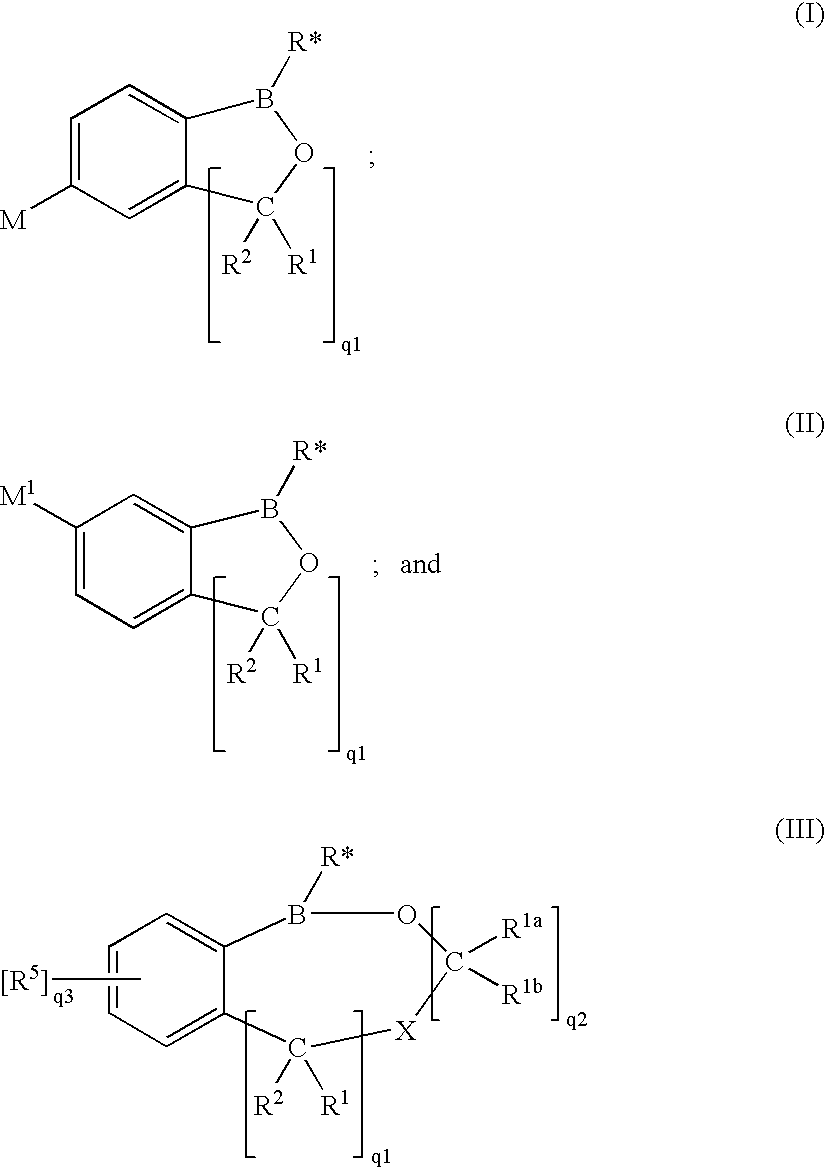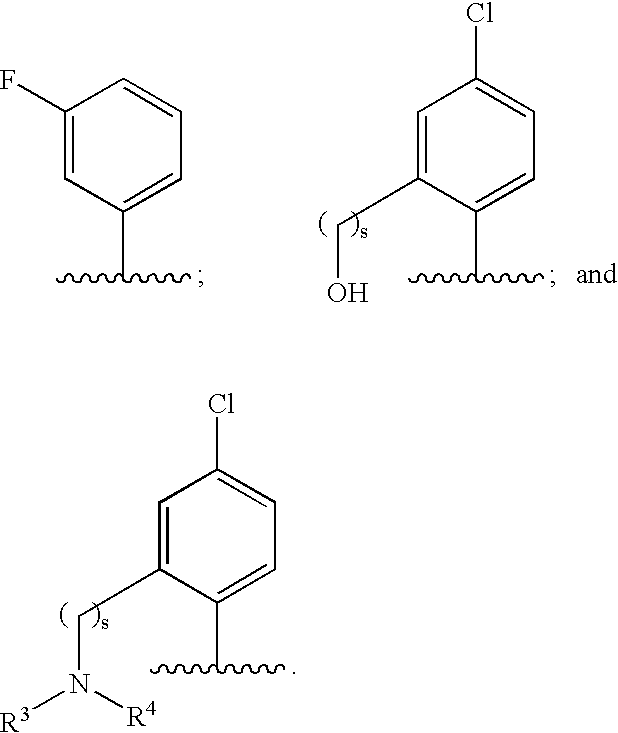Hydrolytically-Resistant Boron-Containing Therapeutics And Methods Of Use
a boron-containing, hydrolytically resistant technology, applied in the direction of biocide, drug composition, group 3/13 element organic compounds, etc., can solve the problems of serious dermatology problems, ungual and/or periungual infections, and all these approaches have major drawbacks, and high dose systemic therapy can have significant adverse effects
- Summary
- Abstract
- Description
- Claims
- Application Information
AI Technical Summary
Problems solved by technology
Method used
Image
Examples
example 1
Precursors to CBOs and CBEs
1.1 2-Bromo-5-fluoro-[1-(methoxymethoxy)methyl]benzene (5b)
[0240] To a solution of 3 (62.0 g, 293 mmol) in MeOH (400 mL) was added NaBH4 (5.57 g, 147 mmol) portionwise at 0° C., and the mixture was stirred at room temperature for 1 h. Water was added, and the solvent was removed under reduced pressure to about a half volume. The mixture was poured into EtOAc and water. The organic layer was washed with brine and dried over anhydrous Na2SO4. The solvent was removed under reduced pressure to afford 4b, which was used for the next step without purification. To a solution of 4b (60.8 g, 293 mmol) and i-Pr2NEt (61 mL, 0.35 mol) in CH2Cl2 was added chloromethyl methyl ether (27 mL, 0.35 mmol) at 0° C., and the mixture was stirred at room temperature overnight. Water was added, and the mixture was extracted with CHCl3. The organic layer was washed with brine and dried over anhydrous Na2SO4. The solvent was removed under reduced pressure to afford 5b (73.2 g, qu...
example 2
CBEs
2.1 1-(3-Chlorophenyl)-1,3-dihydro-5-fluoro-2,1-benzoxaborole (9f)
[0253] Compound 5b (1.06 g, 4.20 mmol) was dissolved in 50 mL of dry THF under nitrogen atmosphere and cooled to −78° C. tert-BuLi (1.7M in pentane, 5.3 mL) was slowly added to the solution. After stirring for 10 minutes at −78° C., compound 7b (764 mg, 4.20 mmol) in 10 mL of dry THF was added and the solution was stirred for further 0.5 h. The solution was then allowed to warm to room temperature and stirred for 18 h. The solvent was removed under reduced pressure, and the residue was partitioned between 40 ml of H2O and 80 mL of diethyl ether. The solution was vigorously stirred for several minutes then neutralized (pH 7) with 6 N HCl. The organic layer was separated and the aqueous solution extracted again with ether (2×80 mL). The ether extracts were combined, dried over MgSO4, filtered and evaporated to give crude 8f (1.22 g) as a yellow oil, which was used for the next step without purification. Compound 8...
example 3
Precursors for CBOs
3.1 2-Bromo-5-fluoro-[1-(methoxymethoxy)ethyl]benzene (18c)
[0271] To a solution of compound 3 (4.23 g, 20.0 mmol) in THF (30 mL) was added MeMgBr (1.4 mol / L in THF; 18 mL) at −78° C. under nitrogen atmosphere, and the mixture was stirred for 2 h while allowing to warm to room temperature. The reaction was quenched with 2 N HCl, and the mixture was extracted with EtOAc. The organic layer was washed with brine and dried over anhydrous Na2SO4. The solvent was removed under reduced pressure. To a solution of the residue (4.62 g) in CH2Cl2 (100 mL) were added i-Pr2NEt (5.2 mL, 30 mmol) and chloromethyl methyl ether (2.0 mL, 26 mmol) at 0° C., and the reaction mixture was stirred at room temperature overnight. Water was added, and the mixture was extracted with CHCl3. The organic layer was washed with brine and dried over anhydrous Na2SO4. The solvent was removed under reduced pressure. The residue was purified by silica gel column chromatography (15:1 hexane / ethyl ac...
PUM
| Property | Measurement | Unit |
|---|---|---|
| molecular weight | aaaaa | aaaaa |
| molecular weight | aaaaa | aaaaa |
| molecular weight | aaaaa | aaaaa |
Abstract
Description
Claims
Application Information
 Login to View More
Login to View More - R&D
- Intellectual Property
- Life Sciences
- Materials
- Tech Scout
- Unparalleled Data Quality
- Higher Quality Content
- 60% Fewer Hallucinations
Browse by: Latest US Patents, China's latest patents, Technical Efficacy Thesaurus, Application Domain, Technology Topic, Popular Technical Reports.
© 2025 PatSnap. All rights reserved.Legal|Privacy policy|Modern Slavery Act Transparency Statement|Sitemap|About US| Contact US: help@patsnap.com



